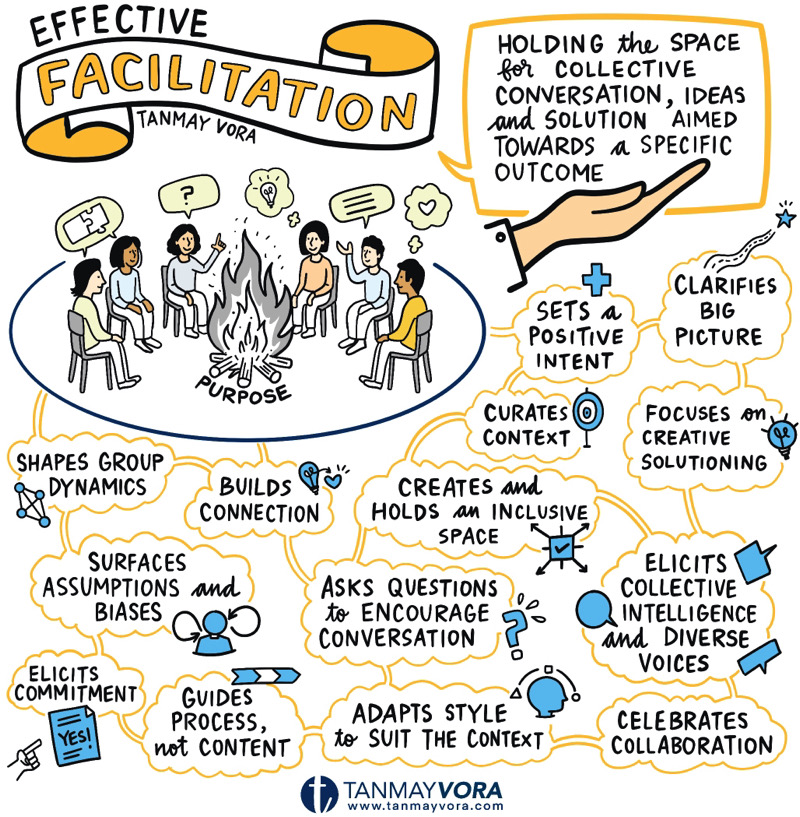What Effective Facilitation Does
Tanmay Vora
AI is moving fast. It calculates, recommends, and predicts. But, it doesn’t listen. It doesn’t invite.
It doesn’t read the emotions that run in a room full of people. It doesn’t nudge a conversation. It doesn’t hold the space.
That is where facilitative leaders shine. They don’t rush to provide answers, but they design better questions in the context of the work. They hold space so that diverse people can express, discuss, dream together and orchestrate their actions collectively.
Facilitative leaders unlock collective intelligence of people enabling them to co-create solutions. They don’t command, they convene. They are not sages on the stage, but catalysts for meaningful conversations. They make the room smarter, not just louder.
Satya Nadella did not turn Microsoft around by just knowing more. He did not command what organization should do. He created an ecosystem where people felt heard, where people collaborated instead of competing. He created a culture of thinking together. I have seen this in action having facilitated conversations within Microsoft organization.
In a world ruled by algorithms, the real edge is human – collaboration, trust, listening, inclusion and trust. Facilitation does all this, and more.
Facilitation isn’t feel good fluff, it is how progress happens when people matters. When a leader is facilitative, the room belongs to everyone.
When Does Facilitation Work Best?
Facilitative leadership is especially effective when:
- You’re navigating complex or ambiguous problems with no single right answer.
- You need alignment across diverse perspectives or functions.
- The goal is to engage teams in co-creating solutions, not just executing instructions.
- Innovation, change, or strategy development requires buy-in and ownership.
- There’s a need to rebuild trust, psychological safety, or team cohesion.
In these scenarios, professional facilitation turns group potential into real progress.
What Effective Facilitation Does

Pause and Reflect
Here are three key reflection questions to help you step into a facilitative leadership mindset:
- Am I creating space for others to think, speak, and contribute – or am I filling it with my own voice?
(Facilitative leaders listen to understand, not to respond.) - How might I design conversations that lead to shared understanding rather than quick decisions?
(Process clarity often leads to better outcomes than rushing to solve.) - What am I doing to build psychological safety so that diverse perspectives can emerge and be heard?
(Real insight comes when people feel safe to show up fully.)
Bonus:
Get in touch if you are looking for professional executive facilitator who can hold space for your people to have a productive conversation.
Learn how visual thinking can make you a more effective facilitator.